The top email clients and email apps of 2021
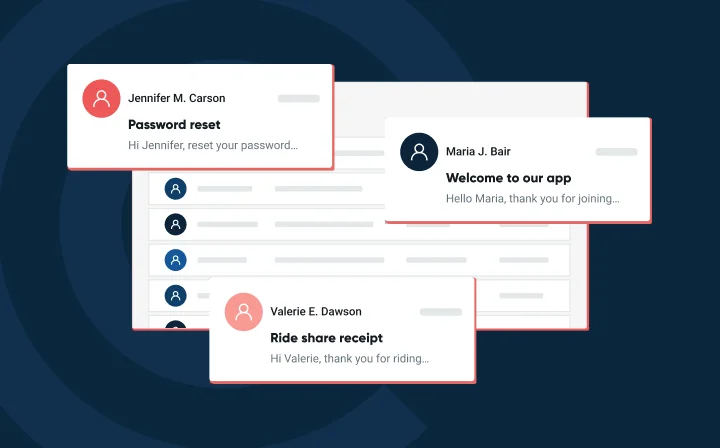

We’ve all been there – struggling to send a perfectly-targeted campaign, trying to figure out which clients our audience uses, and wondering how we can make sure our email looks and sounds great no matter where and how they’re viewing it. What can possibly solve these problems?
Luckily, if you’re struggling, we’re here to help. We recently published our report “The Path to Email Engagement in 2021,” which highlights the latest email trends and user habits – and that includes research into today’s top email clients. Since the 1990s, email has become a prime method of communication for people all over the world, with many clients to choose from.
Email sending success depends on knowing about these clients, their differences and similarities. In this article, we’ll take a look at the top providers and provide some tips on sending to them all.
Let’s continue and look up over the cutting edge of email.
To begin our email client journey, let’s take a look at the most popular email clients and platforms. Like most things email, there is no one-size-fits-all answer (i.e., everyone uses AOL Mail!) that we can pinpoint. However, there are useful trends that offer us insight into global user habits.
The popularity of email clients and platforms differs by location, and many people have more than one email address. This means that, when sending, you should be aware of which providers your audience is using the most.
Our research revealed that, overall, Gmail remained the most popular email client – 65.3% of our global respondents reported using it. It’s most popular in the United States (its country of origin, so not too surprising) and Spain. 76.3% of American respondents and 74.6% of Spanish respondents reported using Gmail. On the other hand, it’s least popular in Germany, capturing “only” 52.9% of users.
When it comes to second-choice providers, different locations had different favorites. In the United States, Yahoo is the second-choice option for personal emails (14.2% of users). Outlook takes a healthy third place (6.5%), and Comcast is last with a barely-there 0.7% of users.
In Europe, Outlook is the more popular second choice in France, Spain, and the UK (with 19.7%, 20%, and 30.6% of users respectively). It’s third in Germany (12.6%), just behind Germany’s Web.de client. If you’re sending to European countries, you won’t find many Yahoo addresses in your lists: Yahoo is a distant third in all European countries, with a single-digit presence in each location.
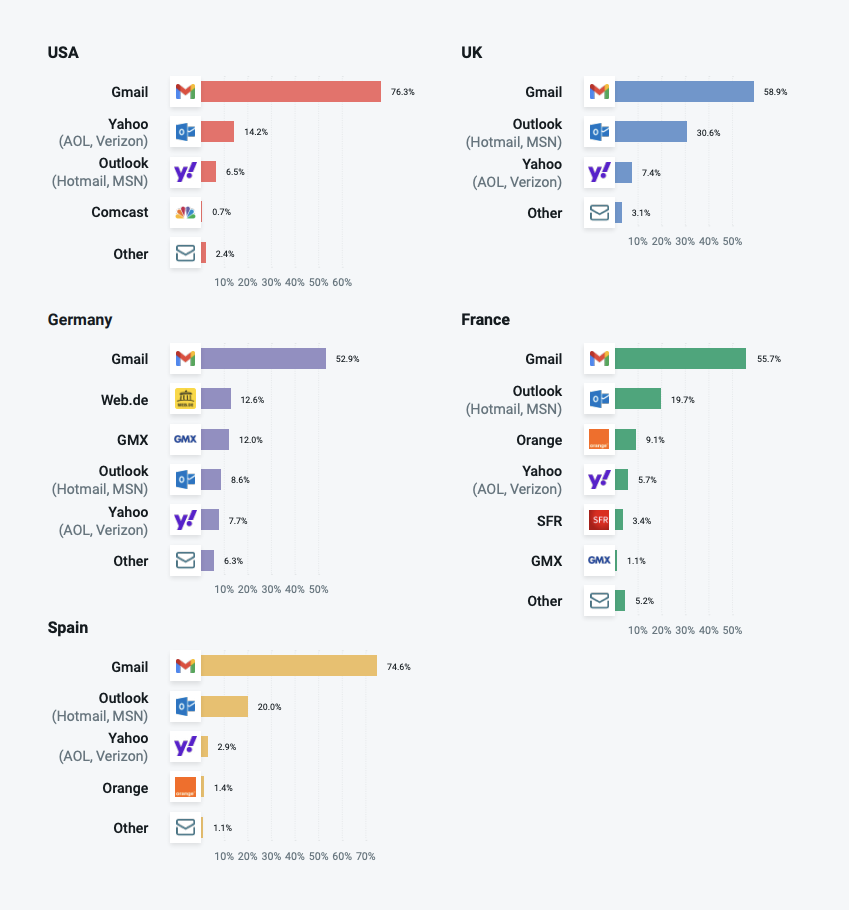
When it comes to the platforms people use for these clients, mobile is still the most popular way to check emails overall. Gmail’s mobile app is the most popular app used to check email (which makes sense, given Gmail’s overall huge popularity). However, mobile is just one part of the story.
Most people don’t check their emails only on one platform. They use a mix of mobile and desktop depending on what’s convenient (in line at the store? Mobile. Working on your laptop? Desktop). Also, when it comes to desktop email, checking email via browser has a big lead over checking via app.
This data gives senders an important message – do not ignore either mobile or desktop platforms, or browser or app usage when creating email. Some may be more popular than others, but all have enough audience share to justify making sure that your messages look great everywhere.
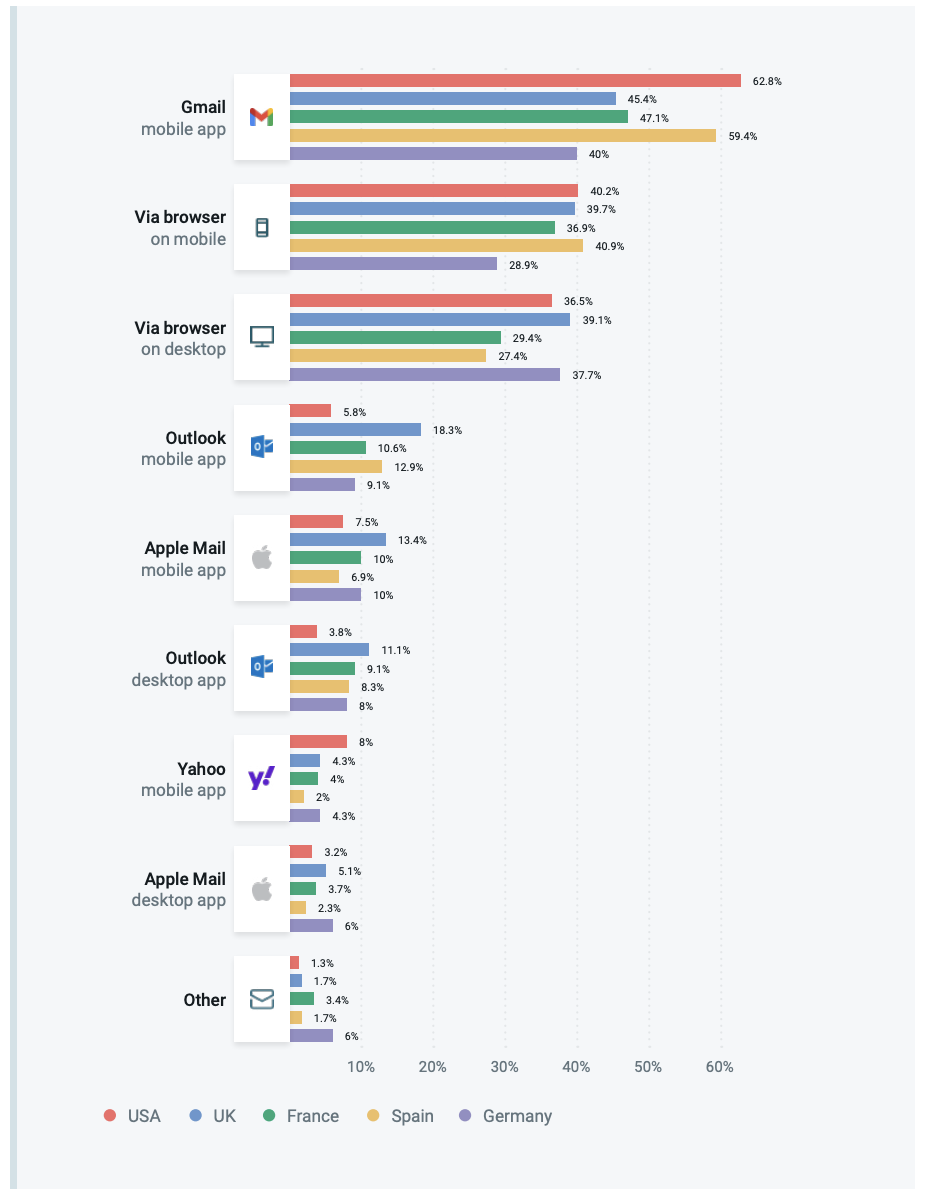
Okay, now that we all know a little more about general email usage, let’s take a look at the top three email providers, how they organize mail, and some best practices for each.
You might be wondering: Does it really matter whether or not you follow certain practices for each email client? After all, they’re mostly the same, right?Sorry, you’re not off the hook. While the main email clients have many similarities, it’s important to remember that they all have differences in layout and message rendering that can affect your emails. Let’s explore how each email client displays mail, and look at a few tips for sending to each.
Unsurprisingly, the ubiquitous Gmail is still the king of the email clients (you may even have it pulled up via app or browser right now). As we’ve mentioned, a whopping 65.3% of global email users use Gmail, and it’s the leading client across all of our surveyed countries. 76.3% of our American respondents use it, and its lowest showing in Europe was a 52.9% share in Germany – still over half of respondents. It’s kind of a big deal.
In both mobile and desktop formats, users can choose to enable or disable the Tabs feature. About half of Gmail users (53.3%) use Tabs to sort their mail, and the other half leave their mail unsorted. While the Tabs feature isn’t used by everyone, it’s still a factor you need to keep in mind when planning for better deliverability. Most people (79.7% globally) check it at least once a week, and half (51%) do it daily.
Gmail uses Gmail Tabs to organize its recipients’ mail into a series of categories. These tabs include Primary mail, Promotions (which includes marketing emails like yours and brand offers and discounts), Social (which includes social media notifications and dating and social websites), and more. If you want to check what tab your email will land in, leverage tools like Mailgun’s Inbox Placement.
Typical Gmail mobile and desktop layouts are shown below.
A Gmail mobile layout with tabs enabled:
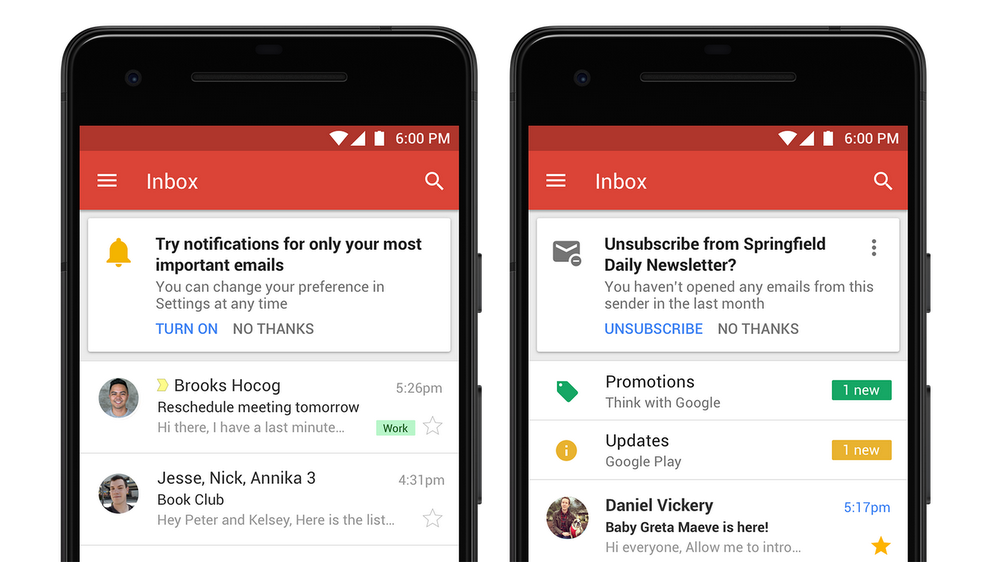
Source: The Keyword
A Gmail desktop layout with tabs enabled:
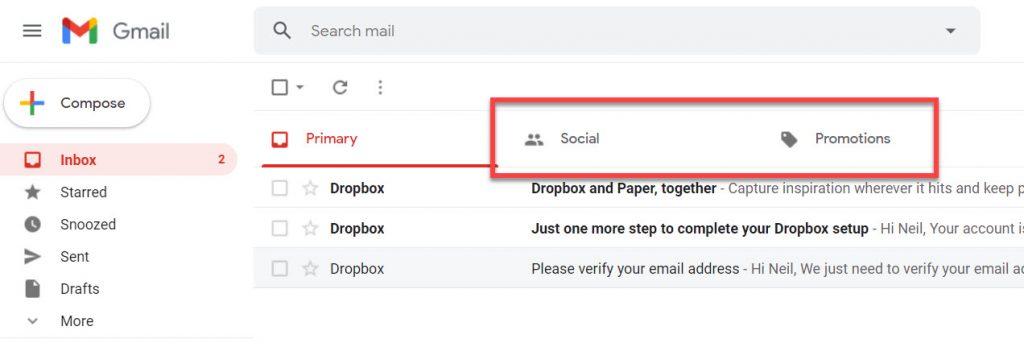
Source: Green Eye IT
Yahoo is the second-most popular client in the U.S., capturing about 14% of American email users. In Europe, it has a smaller presence ranging from 3% usage in Spain to 7.5% usage in the UK.
Yahoo is one of the older email clients, but in recent years it’s created a newer layout that is similar to Gmail’s. Yahoo uses a Views features that lets users see different, organized “views” of their inbox. Views include Primary mail, Deals (which is like Gmail’s Promotions for brand communications), and subscriptions (streaming services, etc.).
A Yahoo mobile layout with two different Views, the primary inbox and Deals:
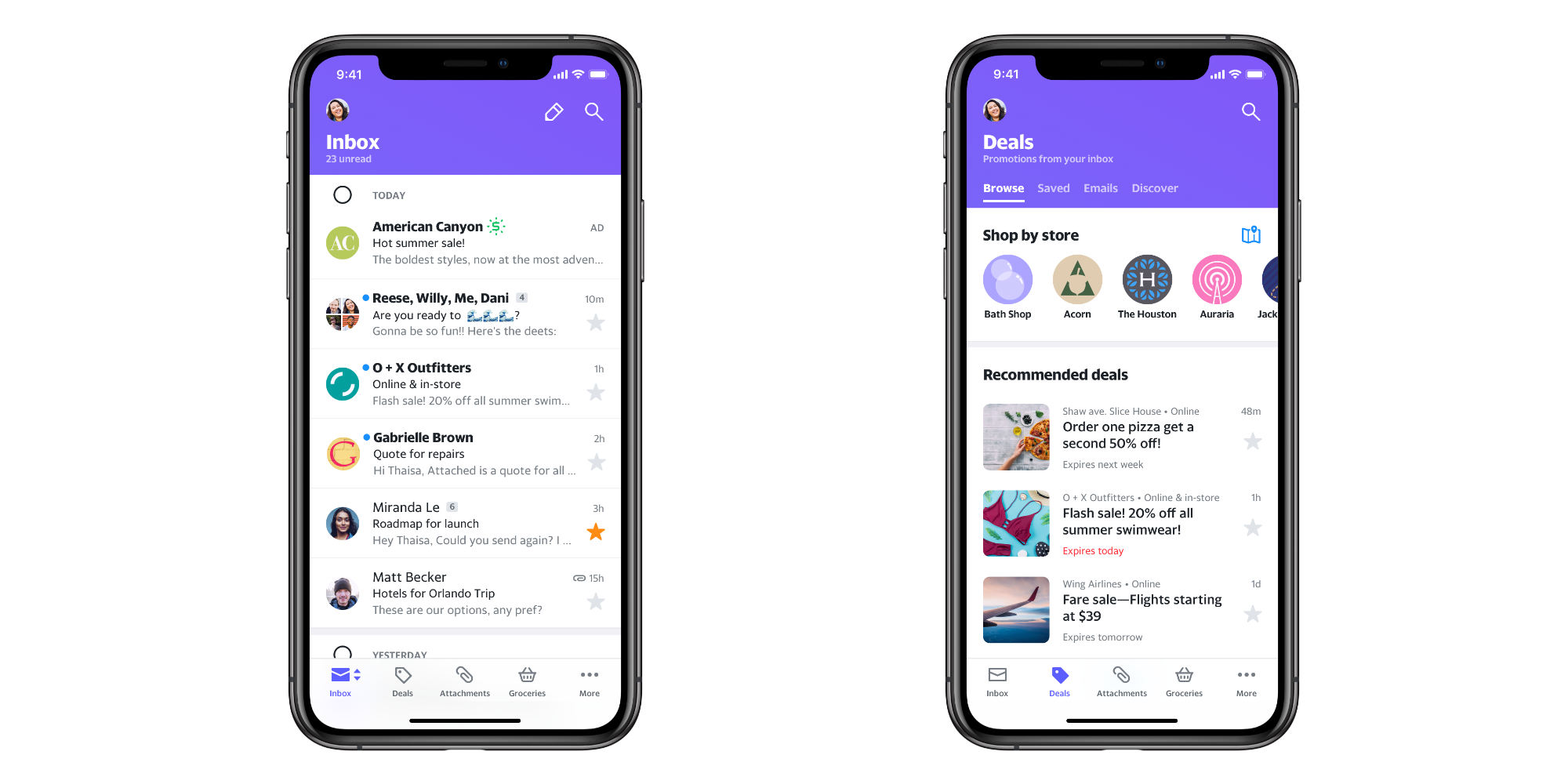
Source: 9to5Mac
Like Gmail, Yahoo includes a version of its Views feature (on the left, as a sidebar) for both mobile and desktop, which lets users view sorted mail based on the same categories. A Yahoo desktop layout with Views:
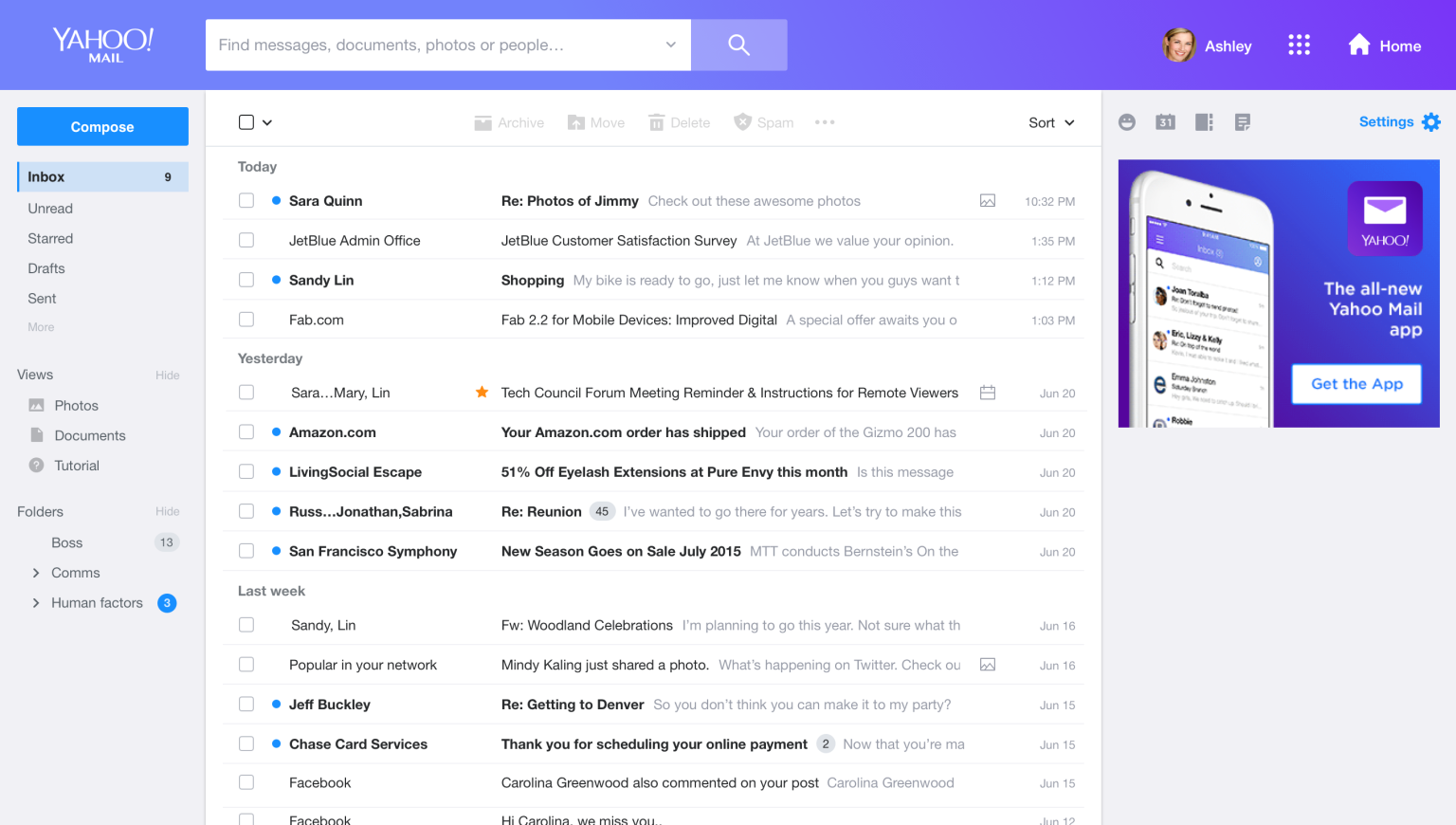
Source: TechCrunch
And now you’ve got those 90s-era Yahoo commercials stuck in your head, right? Never fear, we’re throwing it back to one more original email client.
Like Yahoo, Outlook (aka Microsoft Outlook) has been around for a while. It’s the second-most popular email provider in Europe, boasting at least 10% of users within each country of the United Kingdom, France, Spain, and Germany.
Since the ‘90s, though, Outlook’s shed its old “Hotmail” name (sad) and made changes to the way it looks for users. Now, Outlook sorts users’ mail using “focused” and “other” tabs. The focused tab is meant to do what it says – collect relevant mail (like messages from close friends, airline tickets, etc.) in one view.
An Outlook mobile layout:
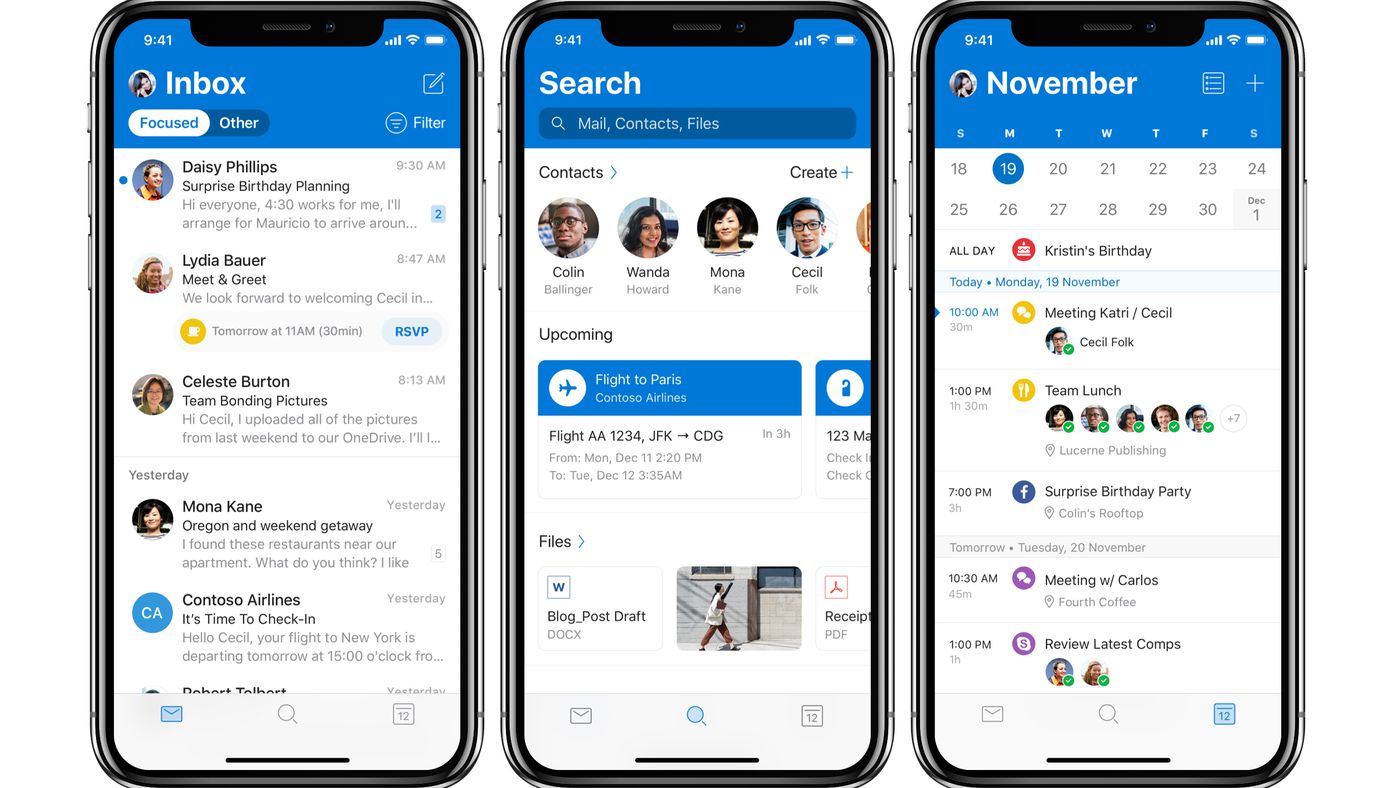
Source: The Verge
In desktop mode, Outlook follows the email client trend of offering its focused inbox feature as a setting, and users can move messages between the modes:
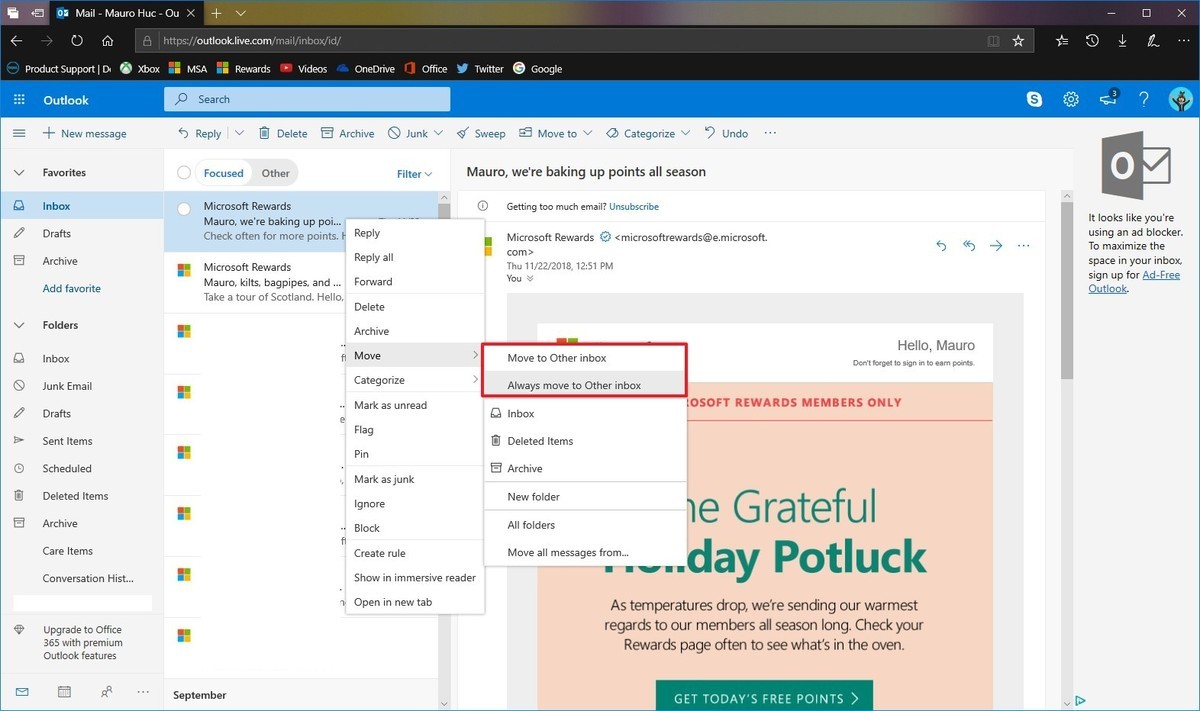
Source: Windows Central
What do you know, Mailjet provides an easy way to see that! If you go to your analytics dashboard and click on “show more statistics,” you’ll be able to see relevant metrics (like open rates and click-through rates) for your email lists’ top three most-used providers. All providers outside the top three will be combined into the “other” tab.
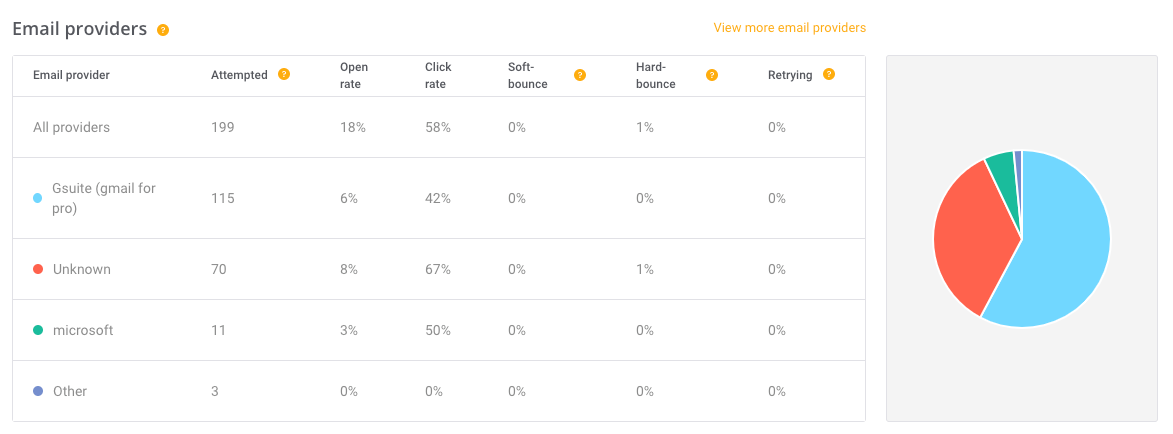
You should take note that the results will show the provider behind the domain. For example, the domain mailjet.com is displayed here as GSuite (Gmail for Pro) because mailjet.com is using Google Apps.
When using Mailgun, you can go to your analytics dashboard and click on “mailbox providers.” Your delivery, open, and click rates will be displayed for each provider.
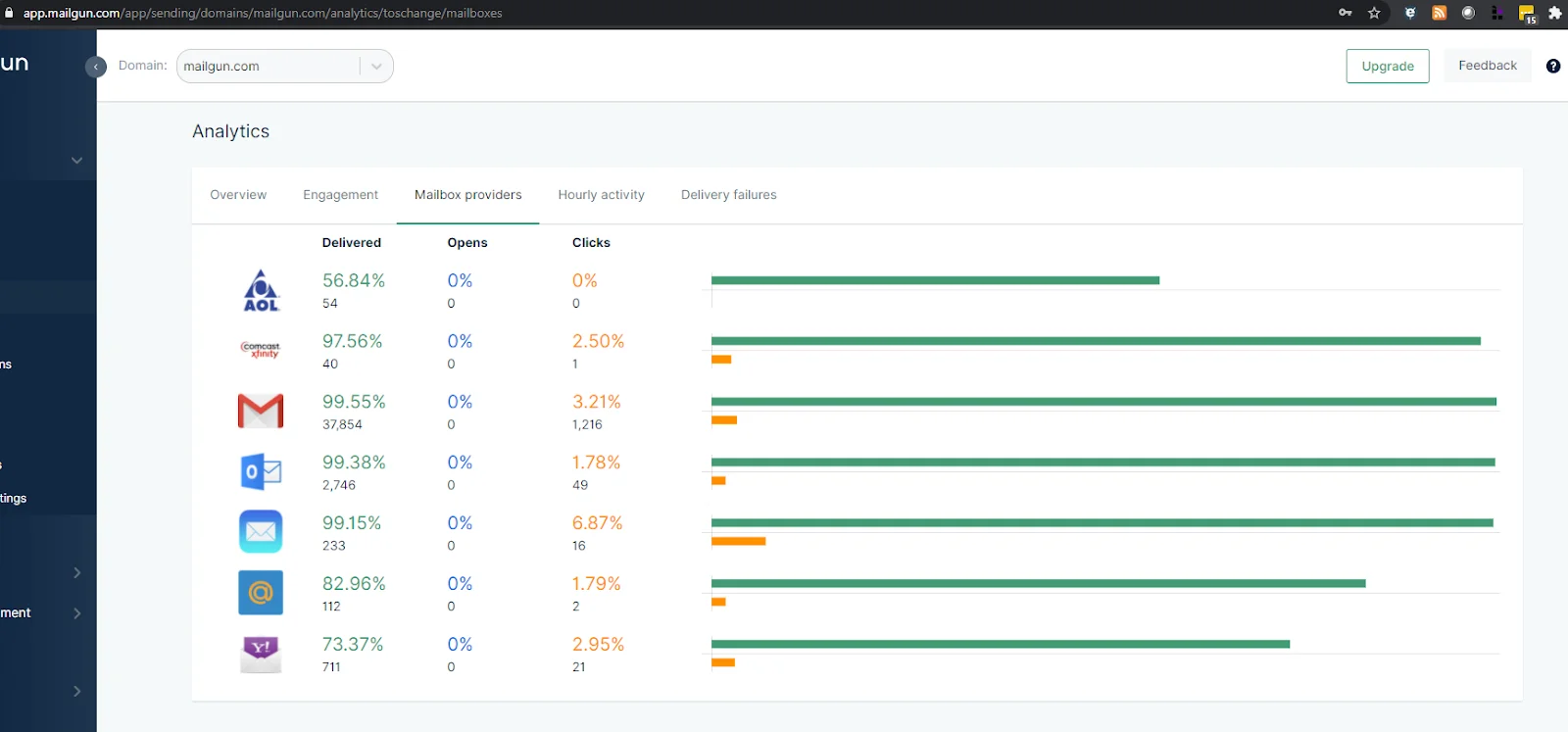
You can use these types of metrics for better message placement and rendering – once you know where you’re sending, you know how to optimize your resources for the most popular providers and platforms.
Email rendering tools, like Litmus, Email on Acid, or Mailjet’s Inbox Preview, can let you see how your email looks in every client. At Mailjet by Pathwire, Enterprise clients can use our Inbox Preview tool to test how their emails will display across the main email clients in their contact list.
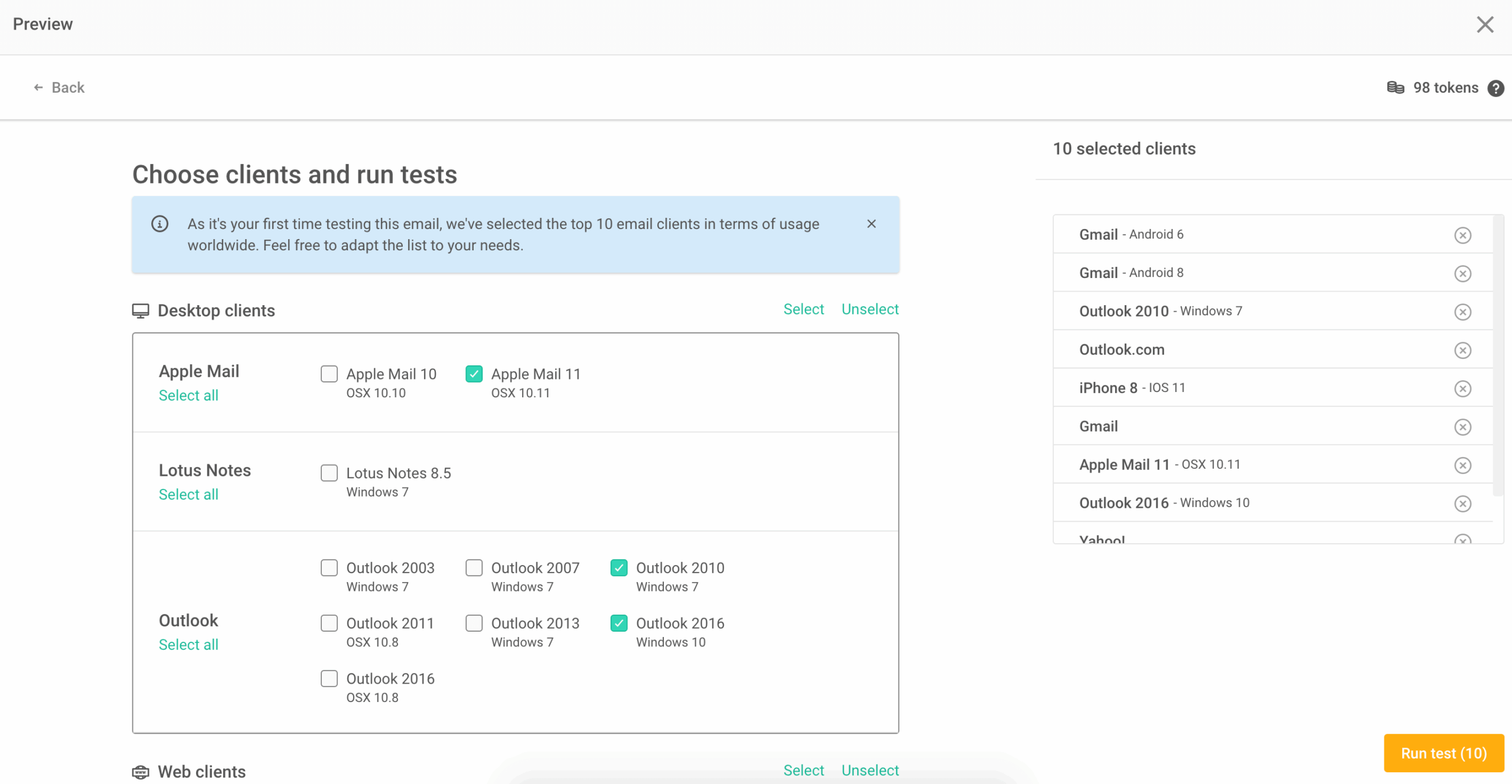
So there you have it. No more wailing or gnashing of teeth, just sweet dreams knowing that your emails are going where they’re needed, and getting the engagement they deserve.
So, it’s safe to say that there are a lot of email clients out there, and even the biggest, most mainstream ones have their differences. However, their similarities are the key to great placement at the top of the inbox. It’s easy to build a new, winning email strategy by holding onto a few key takeaways:
As we mentioned before, email is a hard thing to get right. But with the right information and insight on your side, you can create messages that have more staying power than a mid-90s Yahoo commercial.